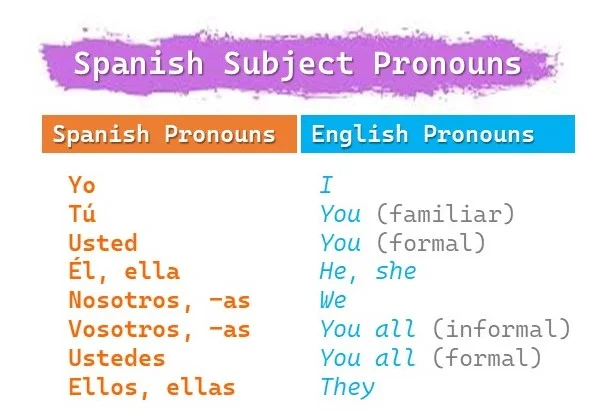Okay, so today I’m gonna walk you through how I tackled creating a Spanish chart using ‘yo,’ ‘tú,’ and all that jazz. It was a bit of a journey, not gonna lie, but totally worth it!

First things first: I needed a clear goal. What exactly did I want this chart to DO? I decided it should be a simple, visual guide to the most common Spanish pronouns and their corresponding verb conjugations. Something a beginner could glance at and get the gist.
Next up, the research phase. I hopped online and looked at a bunch of different Spanish conjugation charts. Some were super complex, others were too basic. I wanted to find a sweet spot – informative but not overwhelming. I checked out some online Spanish courses too, just to see how they presented the material.
Then came the fun part: laying out the chart. I started with a simple table. Columns for the pronouns (‘yo,’ ‘tú,’ ‘él/ella/usted,’ etc.), and rows for different verb tenses (present, past, future). I figured this was the most logical way to organize the information.
Populating the chart was tedious! I focused on regular verbs first (‘-ar,’ ‘-er,’ ‘-ir’ endings). I picked a few common verbs like ‘hablar’ (to speak), ‘comer’ (to eat), and ‘vivir’ (to live). Conjugating them for each pronoun and tense was a good refresher for me, even though I’d learned this stuff years ago. Definitely double-checked my work with a conjugation website!
Making it visual: I didn’t want just a boring table. I used different colors for each pronoun. ‘Yo’ was blue, ‘tú’ was green, ‘él/ella/usted’ was orange, and so on. It made the chart way more engaging and easier to read at a glance.

Dealing with Irregular Verbs: This was the trickiest part. You can’t just follow a pattern with irregular verbs. I decided to add a separate section specifically for the most common irregular verbs like ‘ser’ (to be), ‘estar’ (to be – different kind!), ‘tener’ (to have), and ‘ir’ (to go). I kept this section concise, focusing on the present tense conjugations only.
Testing, testing! I showed the chart to a friend who was learning Spanish. Her feedback was invaluable. She pointed out a few areas that were confusing, and I tweaked the design and wording accordingly. It’s always good to get a fresh pair of eyes on your work.
Final touches: I added a brief explanation of how to use the chart, just a couple of sentences at the top. I also included a note about how this chart only covered the most basic tenses and pronouns, and that there was much more to learn. I didn’t want anyone to think they’d mastered Spanish conjugation after just looking at this chart!
And that’s pretty much it! It wasn’t rocket science, but it took time and attention to detail. The result is a simple, visual guide that hopefully makes learning Spanish a little less daunting. I might even make a more advanced version in the future, but for now, I’m happy with this one.
